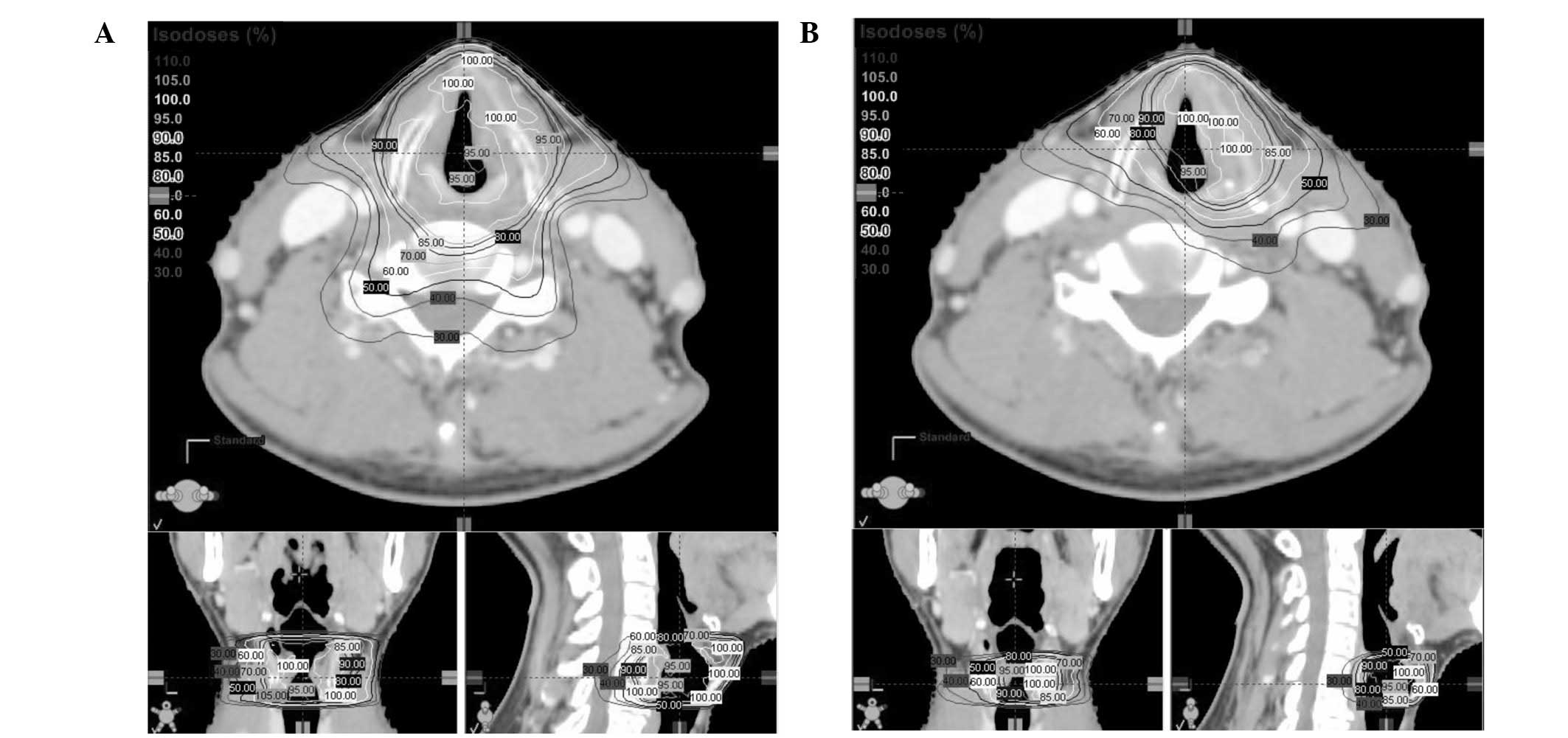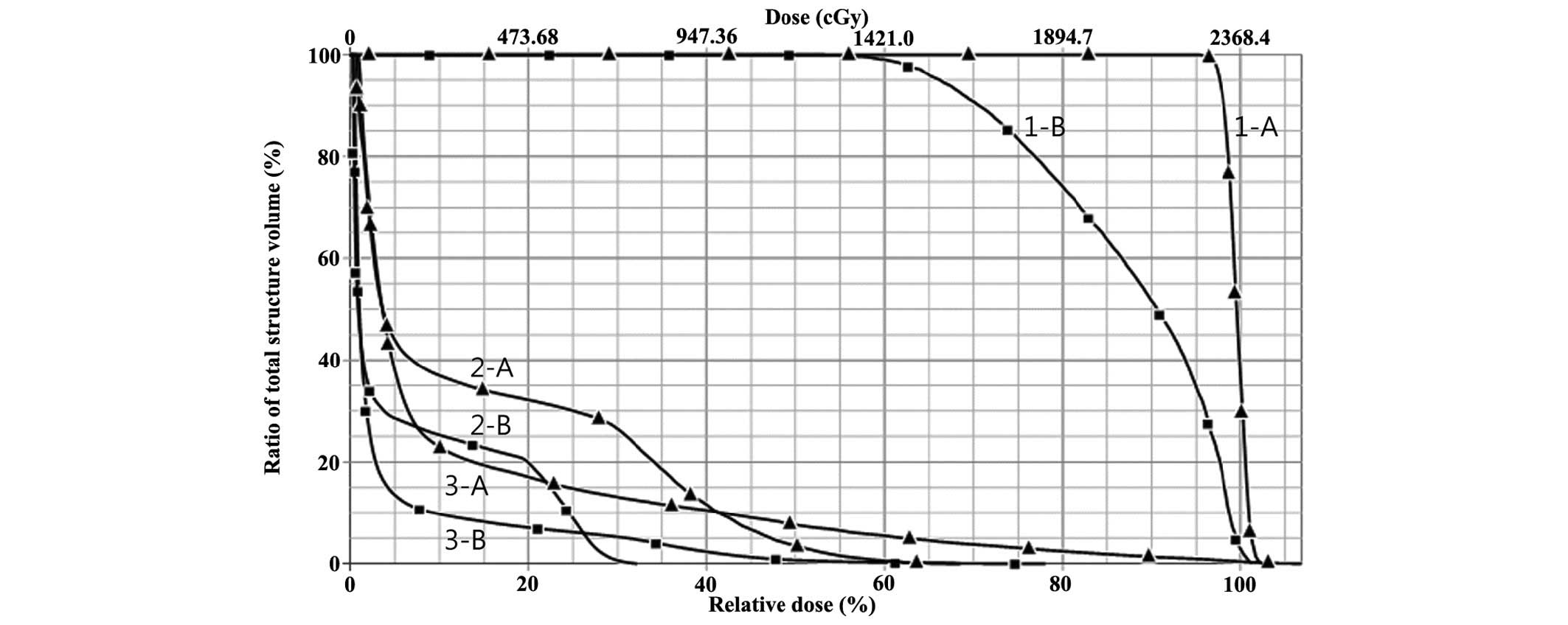|
1
|
Warner L, Chudasama J, Kelly CG, Loughran
S, McKenzie K, Wight R and Dey P: Radiotherapy versus open surgery
versus endolaryngeal surgery (with or without laser) for early
laryngeal squamous cell cancer. Cochrane Database Systematic Rev.
12:CD0020272014.
|
|
2
|
Yoo J, Lacchetti C, Hammond JA and Gilbert
RW: Head and Neck Cancer Disease Site Group: Role of endolaryngeal
surgery (with or without laser) versus radiotherapy in the
management of early (T1) glottic cancer: A systematic review. Head
Neck. 36:1807–1819. 2014. View Article : Google Scholar : PubMed/NCBI
|
|
3
|
van Loon Y, Sjügren EV, Langeveld TP, de
Jong Baatenburg RJ, Schoones JW and van Rossum MA: Functional
outcomes after radiotherapy or laser surgery in early glottic
carcinoma: A systematic review. Head Neck. 34:1179–1189. 2012.
View Article : Google Scholar : PubMed/NCBI
|
|
4
|
Remacle M, Eckel HE, Antonelli A, Brasnu
D, Chevalier D, Friedrich G, Olofsson J, Rudert HH, Thumfart W, de
Vincentiis M and Wustrow TP: Endoscopic cordectomy. A proposal for
a classification by the working committee, European laryngological
society. Eur Arch Otorhinolaryngol. 257:227–231. 2000. View Article : Google Scholar : PubMed/NCBI
|
|
5
|
Lim YJ, Wu HG, Kwon TK, Hah JH, Sung MW,
Kim KH and Park CI: Long-term outcome of definitive radiotherapy
for early glottic cancer: Prognostic factors and patterns of local
failure. Cancer Res Treat. 47:862–870. 2015. View Article : Google Scholar : PubMed/NCBI
|
|
6
|
Gomez D, Cahlon O, Mechalakos J and Lee N:
An investigation of intensity-modulated radiation therapy versus
conventional two-dimensional and 3D-conformal radiation therapy for
early stage larynx cancer. Radiat Oncol. 5:742010. View Article : Google Scholar : PubMed/NCBI
|
|
7
|
Rosenthal DI, Fuller CD, Barker JL Jr,
Mason B, Garcia JA, Lewin JS, Holsinger FC, Stasney CR, Frank SJ,
Schwartz DL, et al: Simple carotid-sparing intensity-modulated
radiotherapy technique and preliminary experience for T1-2 glottic
cancer. Int J Radiat Oncol Biol Phys. 77:455–461. 2010. View Article : Google Scholar : PubMed/NCBI
|
|
8
|
Chera BS, Amdur RJ, Morris CG and
Mendenhall WM: Carotid-sparing intensity-modulated radiotherapy for
early-stage squamous cell carcinoma of the true vocal cord. Int J
Radiat Oncol Biol Phys. 77:1380–1385. 2010. View Article : Google Scholar : PubMed/NCBI
|
|
9
|
Osman SO, de Boer HC, Heijmen BJ and
Levendag PC: Four-dimensional CT analysis of vocal cords mobility
for highly focused single vocal cord irradiation. Radiother Oncol.
89:19–27. 2008. View Article : Google Scholar : PubMed/NCBI
|
|
10
|
Osman SO, de Boer HC, Astreinidou E,
Gangsaas A, Heijmen BJ and Levendag PC: On-line cone beam CT image
guidance for vocal cord tumor targeting. Radiother Oncol. 93:8–13.
2009. View Article : Google Scholar : PubMed/NCBI
|
|
11
|
Osman SO, Astreinidou E, de Boer HC,
Keskin-Cambay F, Breedveld S, Voet P, Al-Mamgani A, Heijmen BJ and
Levendag PC: IMRT for image-guided single vocal cord irradiation.
Int J Radiat Oncol Biol Phys. 82:989–997. 2012. View Article : Google Scholar : PubMed/NCBI
|
|
12
|
Osman SO, Astreinidou E, Levendag PC and
Heijmen BJ: Impact of geometric variations on delivered dose in
highly focused single vocal cord IMRT. Acta Oncol. 53:278–285.
2014. View Article : Google Scholar : PubMed/NCBI
|
|
13
|
Levendag PC, Teguh DN, Keskin-Cambay F,
Al-Mamgani A, van Rooij P, Astreinidou E, Kwa SL, Heijmen B,
Monserez DA and Osman SO: Single vocal cord irradiation: A
competitive treatment strategy in early glottic cancer. Radiother
Oncol. 101:415–419. 2011. View Article : Google Scholar : PubMed/NCBI
|
|
14
|
Kwa SL, Al-Mamgani A, Osman SO, Gangsaas
A, Levendag PC and Heijmen BJ: Inter- and intrafraction target
motion in highly focused single vocal cord irradiation of T1a
larynx cancer patients. Int J Radiat Oncol Biol Phys. 93:190–195.
2015. View Article : Google Scholar : PubMed/NCBI
|
|
15
|
Withers HR, Peters LJ and Taylor JM:
Dose-response relationship for radiation therapy of subclinical
disease. Int J Radiat Oncol Biol Phys. 31:353–359. 1995. View Article : Google Scholar : PubMed/NCBI
|
|
16
|
Edge SB, Byrd DR, Compton CC, Fritz AG,
Greene FL and Trotti A: AJCC cancer staging manual (7th). New York,
NY: Springer. 2010.
|
|
17
|
Kim ES and Yeo SG: Volumetric modulated
arc radiotherapy sparing the thyroid gland for early-stage glottic
cancer: A dosimetrical analysis. Oncology Lett. 7:1987–1991.
2014.
|
|
18
|
Kong M, Hong SE, Choi J and Kim Y:
Comparison of survival rates between patients treated with
conventional radiotherapy and helical tomotherapy for head and neck
cancer. Radiat Oncol J. 31:1–11. 2013. View Article : Google Scholar : PubMed/NCBI
|
|
19
|
Feigenberg SJ, Lango M, Nicolaou N and
Ridge JA: Intensity-modulated radiotherapy for early larynx cancer:
Is there a role? Int J Radiat Oncol Biol Phys. 68:2–3. 2007.
View Article : Google Scholar : PubMed/NCBI
|
|
20
|
Zumsteg ZS, Riaz N, Jaffery S, Hu M,
Gelblum D, Zhou Y, Mychalczak B, Zelefsky MJ, Wolden S, Rao S and
Lee NY: Carotid sparing intensity-modulated radiation therapy
achieves comparable locoregional control to conventional
radiotherapy in T1-2N0 laryngeal carcinoma. Oral Oncol. 51:716–723.
2015. View Article : Google Scholar : PubMed/NCBI
|
|
21
|
Berwouts D, Swimberghe M, Duprez F,
Boterberg T, Bonte K, Deron P, De Gersem W, De Neve W and Madani I:
Intensity-modulated radiotherapy for early-stage glottic cancer.
Head Neck. 2014.(Epub ahead of print). PubMed/NCBI
|
|
22
|
Janssen S, Glanzmann C, Huber G and Studer
G: Risk-adapted partial larynx and/or carotid artery sparing
modulated radiation therapy of glottic cancer. Radiat Oncol.
9:1362014. View Article : Google Scholar : PubMed/NCBI
|
|
23
|
Boomsma MJ, Bijl HP, Christianen ME, Beetz
I, Chouvalova O, Steenbakkers RJ, van der Laan BF, Wolffenbuttel
BH, Oosting SF, Schilstra C and Langendijk JA: A prospective cohort
study on radiation-induced hypothyroidism: Development of an NTCP
model. Int J Radiat Oncol Biol Phys. 84:e351–e356. 2012. View Article : Google Scholar : PubMed/NCBI
|
|
24
|
Nishi T, Nishimura Y, Shibata T, Tamura M,
Nishigaito N and Okumura M: Volume and dosimetric changes and
initial clinical experience of a two-step adaptive intensity
modulated radiation therapy (IMRT) scheme for head and neck cancer.
Radiother Oncol. 106:85–89. 2013. View Article : Google Scholar : PubMed/NCBI
|
















